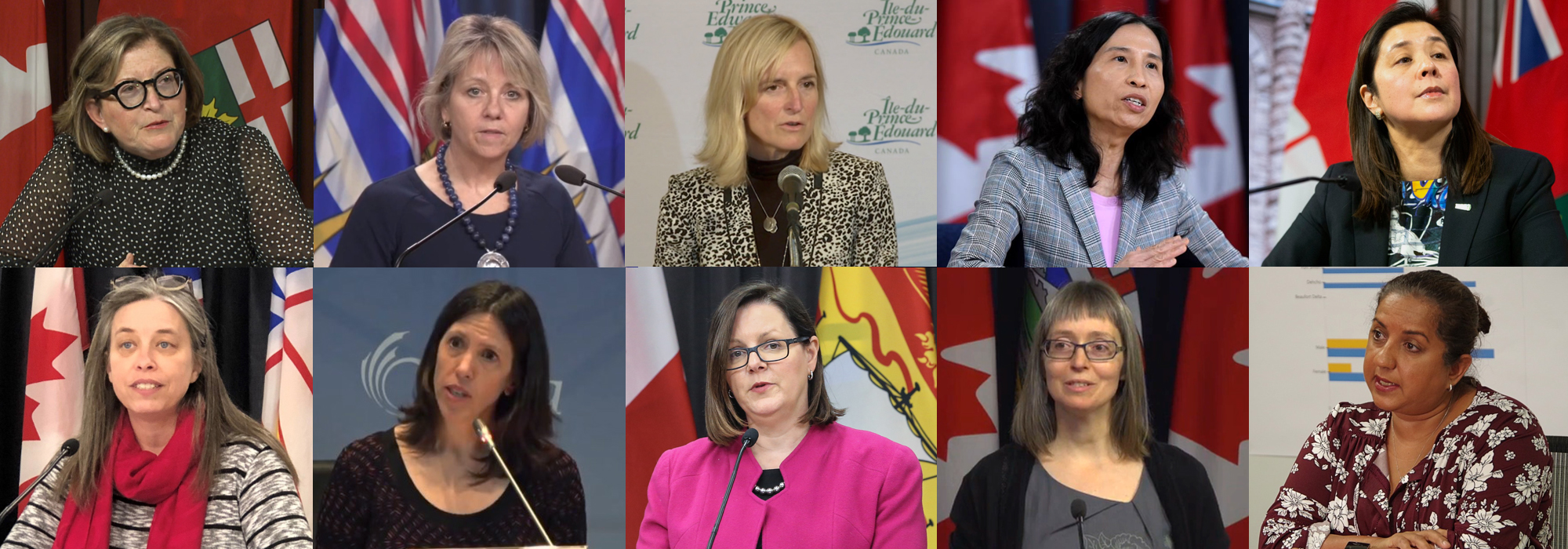
Kids in PEI recently participated in a superhero-themed virtual hangout, where some dressed up as …. Dr. Heather Morrison. Morrison – who has also had a calf named after her – is the province’s chief public health officer. The COVID-19 pandemic has made Morrison and other chief public health officers and chief medical officers celebrities, and a significant number of these evidence-loving rockstars are women.
They’ve had their faces emblazoned on t-shirts, their portraits grace street murals, and their press conferences have inspired YouTube performances.
“It’s humbling,” Morrison said in an interview. “The overwhelming feedback has been supportive.”
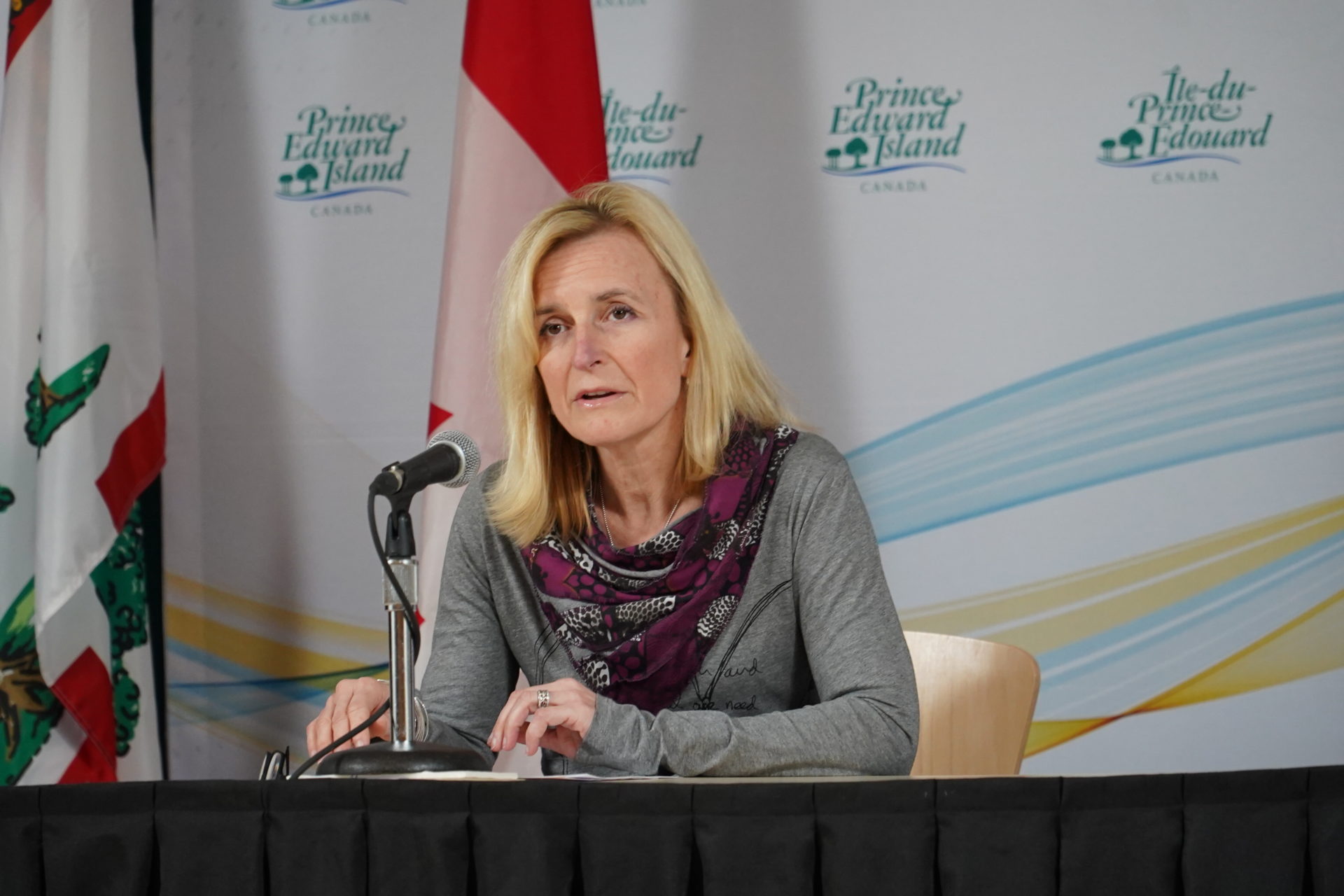
Of the 14 provincial and national chief medical officers and public health officers, 7 are women including Canada’s chief medical officer, Dr. Theresa Tam. There are also women in public health officer roles in major cities such as Toronto and Ottawa.
Over the past weeks, they’ve been serving Canadians by managing an unprecedented infectious threat while also breaking down complex information under bright lights in demanding daily press conferences that have become appointment television across the country. Tam now appears in national television commercials – a rare platform for a public servant.
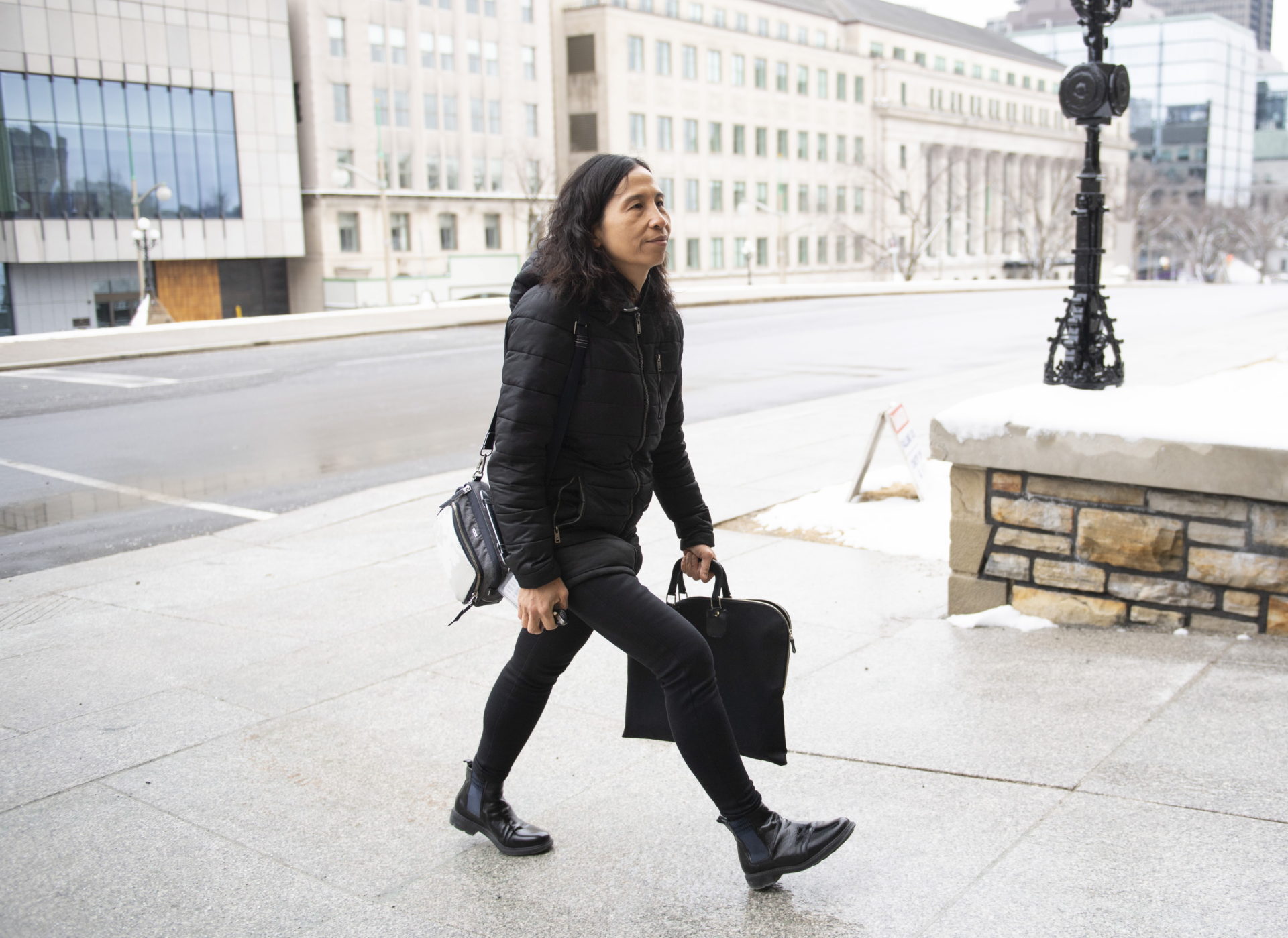
Some of the focus on this group of women is frivolous — the frenzy around Alberta’s chief medical health officer Dr. Deena Hinshaw’s periodic table dress and the Twitter account inspired by Toronto’s Dr. Eileen de Villa’s scarves are just two examples.
starting april with some beautiful botanicals … no fools here pic.twitter.com/fQjaApZMhK
— Dr. de Villa’s Scarf (@de_scarf) April 1, 2020
But mostly there’s been a deep appreciation for these steady figures in these unsteady times.
“They’re trustworthy figures in a time of great anxiety,” said Dr. Leyla Asadi, an Edmonton-based infectious disease specialist pursuing a PhD in tuberculosis elimination strategies. “I appreciate their technical expertise without it being coloured by political views.”
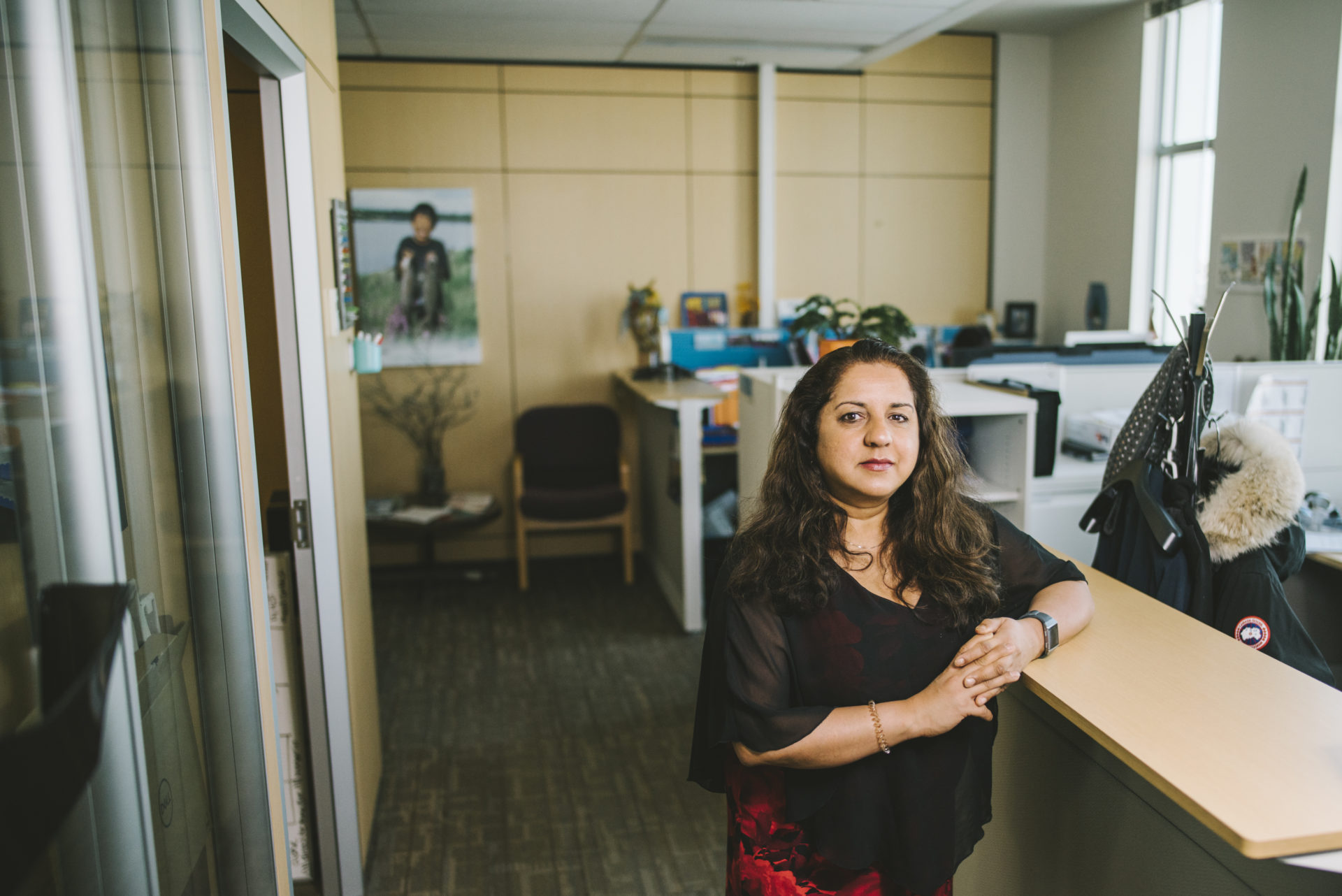
There’s hope that the high profile afforded to women chief medical officers could influence a generation of girls behind them.
“What we’re seeing right now will have a huge impact on those young girls, not just the 10-year-olds, but even the 16-year-olds and 18-year-olds that are thinking about what they want to study at university,” said Dr. Jane Philpott, a former federal health minister and hospital chief.
Although the vast majority of health and social assistance workers are women, 81.25 percent, and 55 percent of new medical students are women, the proportions of women in leadership positions are another story. Only 12 per cent of Canada’s deans of medicine were women in numbers compiled for 2018-19 – and there have been only 7 in the country’s history.
In Canada, Ottawa-based researcher Ivy Lynn Bourgeault has been collecting data for a project with Women and Gender Equality Canada. Bourgeault, who holds the University of Ottawa’s research chair in gender, diversity and the professions, says the gender leadership gap is clear: women are underrepresented in the most prestigious leadership roles in health, like deans or CEOs of large research hospitals, and second, they are proportionally underrepresented in other leadership roles.
A Canadian Medical Association report outlining barriers to women in the sector will be familiar to women across sectors: ingrained gender expectations, implicit bias that men make better leaders, harassment and a lack of mentors, to name a few.
These challenges can lead to a lack of confidence — a difficult thing to measure and move the needle on. Dr. Shanthi Johnson, the dean of public health at the University of Alberta, sees this divide starting in the classroom. In a program where 59 percent of the students are women, she sees students who have capacity but don’t have the opportunity to speak up.
“Even in a classroom situation we need to [call on] students who are quiet…to create that opportunity for them to gain that confidence,” Johnson said. “We need to do that across the pipeline.”
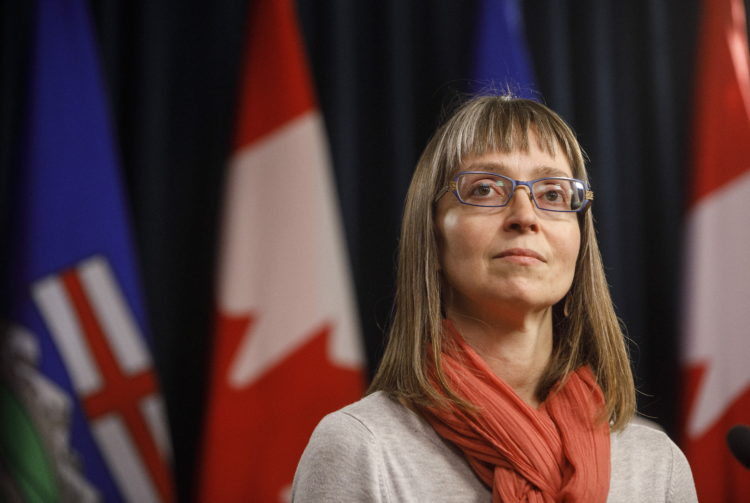
When asked if there were many women leaders to look up as a medical student in the early 1980s, Philpott is quick to answer: “Definitely not.”
“When I was in medical school [my professors] were almost entirely men,” she said. “And they still are in the higher ranks of leadership in both medical schools and hospitals.”
Philpott attributes her confidence to pursue a career in health to growing up in a safe, loving home, recognizing that she didn’t face barriers to advancement based on race or other factors that can be even more stifling than gender. But she says having role models is also key to being able to see yourself in leadership roles. That’s part of why she’s looking forward to stepping into her new role as dean of health sciences at Queen’s University in July.
“Modelling is really critical because otherwise it’s hard to break through,” says Philpott.
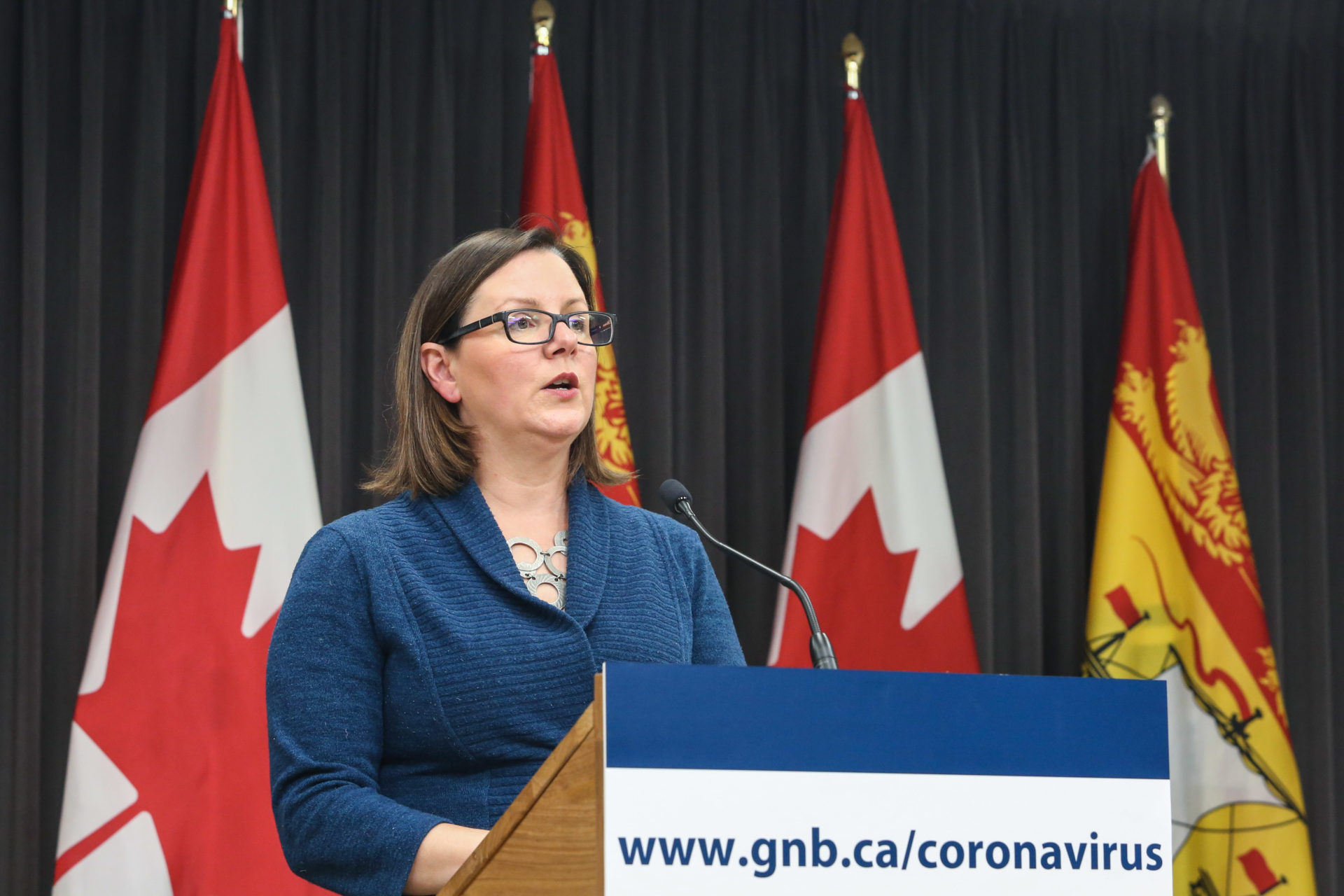
While gender is certainly not the only determinant of leadership style, research shows that diversity in health leadership benefits population health. In healthcare, the gaps in leadership have led to half the population being outright ignored. For instance, it wasn’t until 1997 that Health Canada introduced guidelines on including women in pharmaceutical trials after women’s advocates called attention to the fact that women were taking drugs tested only on men.
When women step into those roles, research shows it “creates a ripple effect that benefits families, communities, and countries,” as noted by Cornell professor of medicine Jennifer A. Downs and her co-authors in the journal Public Health Action. The authors use examples from India, where female politicians promoted immunization and the US, where women senators sponsored legislation to ensure screening of breast and cervical cancer.
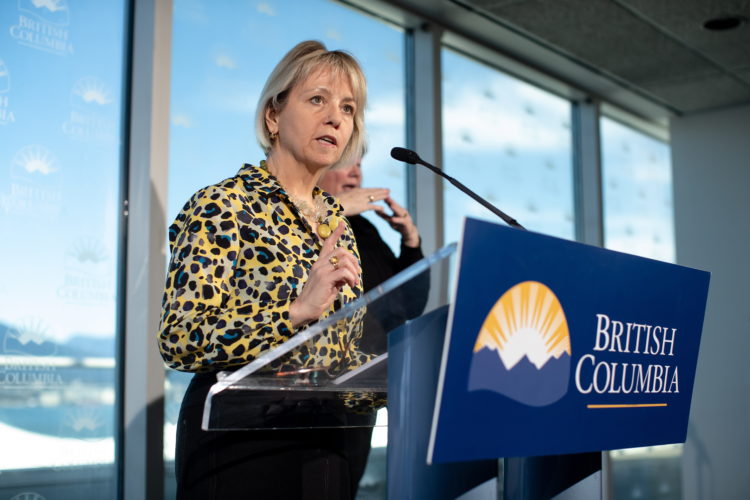
Women in these roles are often motivated by seeking equity. It’s a trait that was evident in Canada’s earliest female physicians who fought to be included in medical schools in order to take care of their communities. Dr. Amelia Yeomans, for instance, studied at the University of Michigan in the late 19th century before Canadian medical schools admitted women. She then practised in Winnipeg, looking at how social and economic conditions impacted the health of the unemployed, sex workers and the prison population.
Heather Morrison in PEI hopes seeing women like her throughout this crisis will have an impact on young women considering a career in public health, and it appears she’s already had an impact on girls. One of her staff passed on a message from one: “When I grow up I want to be like Dr. Morrison.”
“Maybe they wouldn’t have ever pictured doing that if they hadn’t seen so many strong wonderful women in these roles,” she said.
This visibility has been encouraging even for Asadi, who is already established in her career surrounded by women leaders. “It makes me feel like I could contribute in this space as well and why don’t I?”
This article is part of the The Coronavirus Pandemic: Canada’s Response special feature.
Photo collage by Julia Bugiel.



